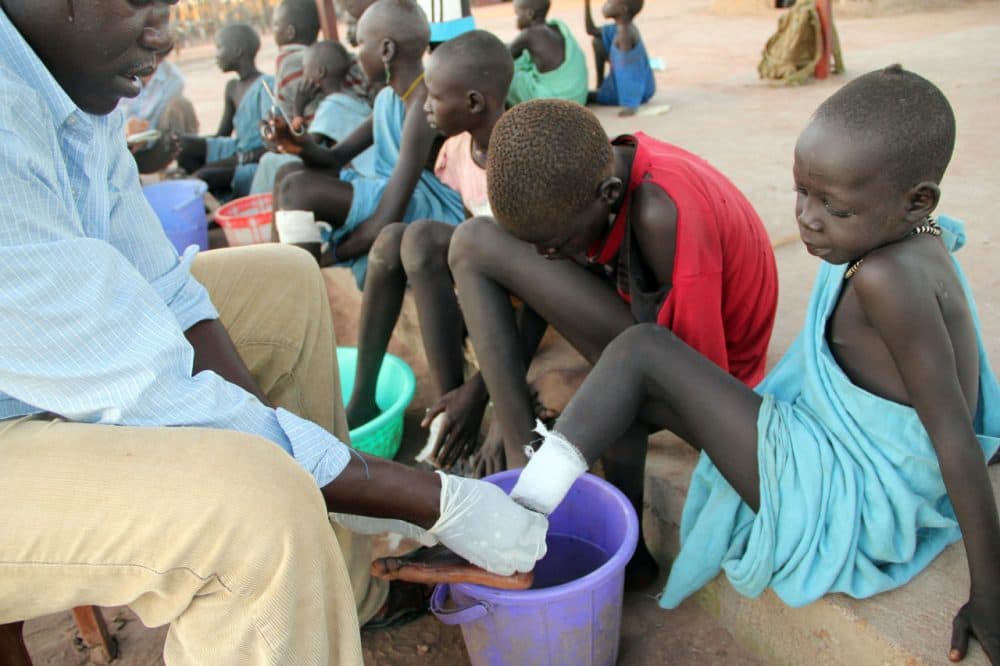Advertisement
Jimmy Carter's Fight To Eradicate The Guinea Worm

In a news conference last week about his cancer diagnosis, President Jimmy Carter said one thing he'd like The Carter Center to achieve in his lifetime is the eradication of the guinea worm.
There are now only 11 guinea worm cases left in the world, compared to 3.6 million cases when The Carter Center started its eradication project in 1986. Here & Now's Robin Young speaks with the man who has led the effort since the start: Dr. Donald Hopkins.
5 Facts On Guinea Worm From Dr. Donald Hopkins
The disease is contracted by drinking infected water.
Guinea worm is contracted by drinking water that has been contaminated by someone else infected with the worm. If an infected person seeks relief from the burning by going into a pond, for example, the worm can deposit hundreds of thousand of larvae into the pond, which are then eaten by tiny water fleas. People who drink from that pond can become infected with the worm.
It can take a year to know if someone has been infected.
An infected person will not show any symptoms for about a year, when the person will begin to experience a burning sensation where the worm is starting to come out through the skin. When guinea worm manifests, 2 to 3-foot-long narrow worms break through the skin on the body, usually on the foot.
Treatment of guinea worm is painful and slow.
The guinea worms have to be reeled out of the skin using an ancient Egyptian method to slowly wind the worm around a stick. If the worm is broken, it will spill its larvae into the skin tissue.
Guinea worm can be eradicated.
The infection can be prevented by educating people to drink filtered water, and not venture into water if they are infected with the disease. There is also a chemical that can be deposited in water to kill the larvae without hurting plants or fish.
Conditions in countries fighting the disease are improving.
Surveillance of the disease has become tighter and more expansive across countries that are fighting guinea worm. People are learning to filter water to make it safe for drinking, and village volunteers are helping report cases.
Guest
- Donald Hopkins, M.D., directs all of the health programs of The Carter Center, including the Guinea Worm Eradication Program.
This segment aired on August 25, 2015.